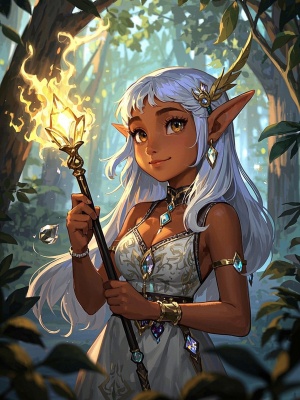How to Shade Drawings Digitally: A Comprehensive Guide
Digital shading is an essential skill for artists who want to bring depth and realism to their artwork. Whether you're a beginner or an experienced artist, mastering digital shading techniques can significantly enhance your drawings. This guide will explore various methods, tools, and best practices to help you achieve professional-looking results.
Understanding Digital Shading Basics
Before diving into advanced techniques, it's crucial to understand the fundamentals of digital shading. Unlike traditional shading, digital shading offers a wide range of tools and flexibility that can make the process easier and more precise.
Key Concepts in Digital Shading
Here are some essential concepts to grasp when learning how to shade drawings digitally:
- Light Source: Always identify your primary light source before starting to shade
- Value Range: Digital shading allows for precise control over light and dark values
- Layer Organization: Using separate layers for shadows and highlights gives you more control
- Brush Selection: Different brushes create different shading effects
For more digital art techniques, check out our AI Painting Guide which covers various digital art methods.
Choosing the Right Tools for Digital Shading
The tools you use can make a significant difference in your digital shading results. Here are some of the most popular options:
Software Options
- Adobe Photoshop - Industry standard with powerful shading tools
- Procreate - Excellent for tablet users with realistic brush engines
- Clip Studio Paint - Specifically designed for digital artists
- Krita - Free alternative with robust shading capabilities
Essential Brushes for Digital Shading
Creating realistic shading often requires using the right brushes. Some essential brush types include:
- Soft round brush for smooth gradients
- Hard edge brush for sharp shadows
- Texture brushes for organic surfaces
- Specialty brushes for specific materials like skin or fabric
Step-by-Step Digital Shading Process
Now let's break down the actual process of how to shade drawings digitally:
1. Establish Your Base Colors
Start with flat colors on separate layers. This gives you a clean foundation to build your shading upon. For portrait work, you might want to reference our Portrait to Art Detail guide.

2. Create Shadow Layers
Add a new layer set to Multiply blending mode for shadows. Begin with broad shadow shapes before adding details.
3. Add Highlights
Create another layer set to Screen or Overlay mode for highlights. Remember that highlights should complement your shadows.
4. Refine and Blend
Use soft brushes or the smudge tool to blend edges where needed. Pay attention to how light interacts with different surfaces.
Advanced Digital Shading Techniques

Once you've mastered basic shading, these advanced techniques can take your work to the next level:
Cell Shading
This comic-style shading uses flat colors with sharp shadows. It's great for stylized artwork and animation.
Ambient Occlusion
This technique adds subtle shadows in crevices and tight spaces where light doesn't easily reach.
Subsurface Scattering
Essential for realistic skin shading, this simulates how light penetrates and scatters through translucent materials.
Common Digital Shading Problems and Solutions
Here's a quick reference for troubleshooting common shading issues:
| Problem | Solution |
|---|---|
| Shadows look flat | Add multiple shadow layers with varying opacities |
| Colors appear muddy | Avoid using pure black for shadows; try dark complementary colors |
| Shading lacks depth | Increase contrast between light and dark areas |
| Edges too harsh | Use softer brushes or lower opacity for smoother transitions |
Conclusion
Mastering how to shade drawings digitally takes practice, but with the right techniques and tools, you can create stunning, dimensional artwork. Remember that shading is about understanding light and form. Experiment with different approaches and find what works best for your style. For more digital art inspiration, visit our Gallery to see examples of professional digital shading.
As you continue your digital art journey, consider exploring other techniques like those covered in our AI Art Guide to expand your creative toolkit.